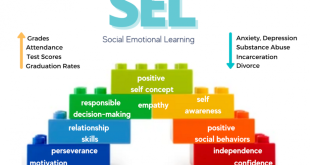Hybrid learning, which combines traditional face-to-face instruction with online learning, has gained prominence in recent years, particularly due to the COVID-19 pandemic. As educational institutions continue to adapt, hybrid learning is poised to evolve further. This overview explores the future of hybrid learning, its benefits, challenges, and potential innovations.
Key Features of Hybrid Learning
1. Flexible Learning Environments
- Personalized Learning: Hybrid models allow students to learn at their own pace, accessing online resources and materials that cater to their individual needs.
- Blended Classrooms: Instructors can create a flexible learning environment where students can participate in both in-person and virtual classes.
2. Technology Integration
- Learning Management Systems (LMS): Platforms like Canvas, Moodle, and Google Classroom facilitate the organization and delivery of hybrid courses, making resources easily accessible.
- Interactive Tools: Technologies such as video conferencing, discussion boards, and collaborative platforms (e.g., Padlet, Miro) enhance engagement and communication.
Benefits of Hybrid Learning
1. Accessibility
- Broader Reach: Hybrid learning can accommodate students who may have barriers to attending in-person classes, such as geographical distance or health concerns.
- Inclusivity: This model can support diverse learning styles and needs, making education more inclusive.
2. Enhanced Student Engagement
- Active Learning Opportunities: By integrating online components, teachers can facilitate interactive and collaborative activities that promote active learning.
- Variety of Resources: Students can access a wealth of digital resources, including videos, articles, and interactive simulations, enriching their learning experience.
3. Efficiency and Cost-Effectiveness
- Resource Optimization: Hybrid models can reduce the need for physical classroom space and materials, potentially lowering operational costs for institutions.
- Time Management: Students can balance their academic responsibilities with other commitments more effectively, leading to improved time management skills.
Challenges of Hybrid Learning
1. Digital Divide
- Access to Technology: Not all students have equal access to the necessary devices and reliable internet, which can create disparities in learning opportunities.
- Training and Support: Educators may require additional training to effectively implement hybrid learning strategies and use technology efficiently.
2. Maintaining Engagement
- Distraction Risks: Students learning from home may face distractions that can impede their focus and participation.
- Isolation: Online learning can lead to feelings of isolation among students, making it essential to foster a sense of community.
3. Assessment and Evaluation
- Fair Assessment: Developing equitable assessment methods that accurately reflect student learning in a hybrid environment can be challenging.
- Academic Integrity: Ensuring academic honesty in online assessments remains a concern.
Innovations Shaping the Future of Hybrid Learning
1. Artificial Intelligence (AI)
- Personalized Learning Pathways: AI can analyze student performance data to create tailored learning experiences, adapting content to meet individual needs.
- Automated Feedback: Intelligent tutoring systems can provide real-time feedback, helping students understand concepts more thoroughly.
2. Virtual and Augmented Reality (VR/AR)
- Immersive Learning Experiences: VR and AR can enhance hybrid learning by creating engaging simulations and interactive environments, particularly in subjects like science and history.
3. Data Analytics
- Learning Analytics: Institutions can utilize data analytics to monitor student engagement, identify at-risk learners, and inform instructional strategies.
- Predictive Analytics: By analyzing trends, educators can anticipate student needs and adapt courses accordingly.
The Future Landscape of Hybrid Learning
1. Evolving Pedagogies
- Student-Centered Approaches: Future hybrid learning models are likely to emphasize student agency, encouraging learners to take an active role in their education.
- Project-Based Learning: Integrating projects that require collaboration and problem-solving can enhance engagement and real-world application of knowledge.
2. Policy and Institutional Support
- Sustainable Models: Educational institutions will need to develop sustainable hybrid learning models that prioritize equity, accessibility, and quality.
- Investment in Technology: Ongoing investment in technology infrastructure and professional development for educators will be crucial for successful implementation.
3. Global Collaboration
- Cross-Institution Partnerships: Hybrid learning can facilitate collaborations between institutions, allowing students to participate in global classrooms and diverse learning experiences.
Conclusion
The future of hybrid learning holds tremendous potential for transforming education. By combining the best aspects of in-person and online learning, hybrid models can create flexible, engaging, and inclusive educational experiences. While challenges remain, ongoing innovations and a commitment to equity will be essential in shaping the next generation of hybrid learning environments. As we navigate this evolving landscape, the focus must remain on fostering meaningful learning experiences that prepare students for the complexities of the modern world.



